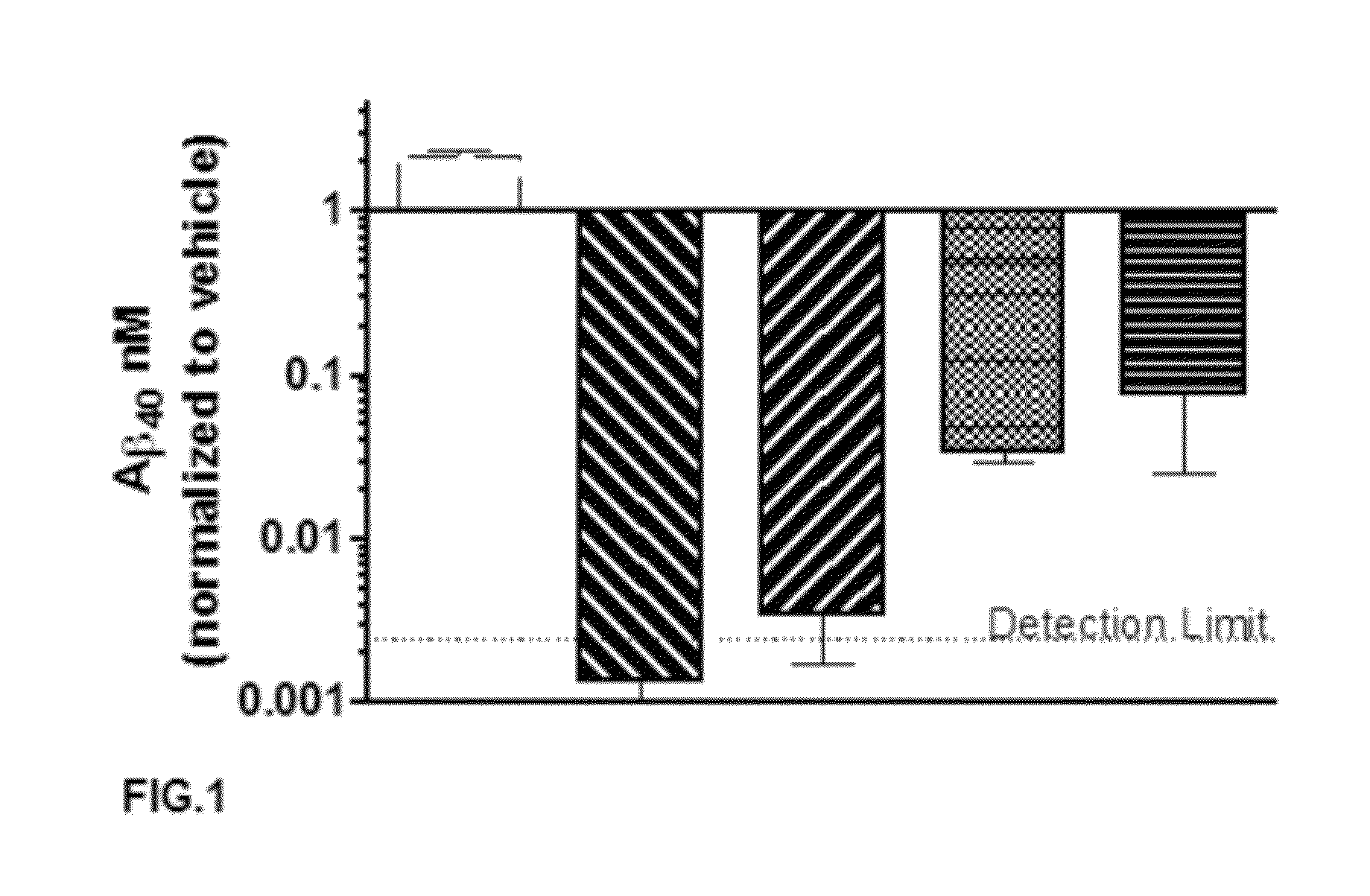A-beta binding polypeptides
a beta-amyloid, polypeptide technology, applied in the direction of peptides, cardiovascular disorders, drug compositions, etc., to achieve the effects of low antigenicity, high stability, and improved stability
- Summary
- Abstract
- Description
- Claims
- Application Information
AI Technical Summary
Benefits of technology
Problems solved by technology
Method used
Image
Examples
example 1
Immunization of Llamas with A-Beta for the Induction of Humoral Immune Responses
[0324]Generation of Monomeric A-Beta Peptide (BAM):
[0325]Monomeric A-beta peptide (BAM) is prepared via trifluoroacetic acid (TFA; Sigma) / 1,1,1,3,3,3-hexafluor-2-propanol (HFIP; Fluka) treatment. The lyophilized A-beta peptide is dissolved in its original vial in 100% TFA to a final concentration of 1 mg / ml. The solution is then evaporated in a speedvac at room temperature. After this and all subsequent evaporation steps the remaining pellet is placed on ice. The pellet is resuspended in HFIP and again evaporated in a speedvac at room temperature followed by another HFIP solubilization after which the solution is divided into aliquots of appropriate volumes. The aliquots are evaporated in a speedvac at room temperature and the pellets are stored at −80° C. Immediately before use, the TFA / HFIP treated A-beta peptide aliquot is dissolved in 100% DMSO via repeated up and down pipetting. The A-beta peptide s...
example 2
Isolation of A-Beta Binding VHH Domains (VHHs) from Immunized Llamas
[0329]Cloning of the Heavy-Chain Only Antibody Fragment Repertoires:
[0330]Following the final immunogen injection, immune tissues as the source of the B-cells producing the heavy-chain antibodies are collected from the immunized llamas. Typically, two 150-ml blood samples, are collected 4 and 8 days after the last antigen injection and one lymph node biopsy, collected 4 days after the last antigen injection are collected per animal. From the blood samples, peripheral blood mononuclear cells (PBMCs) are prepared using Ficoll-Hypaque according to the manufacturer's instructions (Amersham Biosciences). From the PBMCs and the lymph node biopsy, total RNA is extracted, which are used as starting material for RT-PCR to amplify the VHH encoding gene segments (formerly described in WO2005 / 044858). For each immunized llama, a library is constructed by pooling the total RNA isolated from all collected immune tissues of that a...
example 3
Characterization of Purified VHHs
[0346]The VHH variants with the slowest dissociation rates for each B-cell lineage are recloned into an expression vector derived from pUC119, which contains the LacZ promoter, a resistance gene for either ampicillin or kanamycin, a multiple cloning site and a hybrid gIII-pelB leader sequence. In frame with the VHH coding sequence, the vector encodes for a C-terminal c-myc tag and a (His)6 tag. VHHs are produced in E. coli TG1 and are purified via immobilized metal affinity chromatography (IMAC) and size exclusion chromatography (SEC) resulting in 95% purity as assessed via SDS-PAGE.
[0347]3.1 VHH Binding to Immobilized A-Beta (ELISA):
[0348]To quantify the binding of the VHHs to monomeric A-beta peptide (BAM), VHHs are applied as dilution series in an ELISA using the same setup as described in Example 2. Except for VHHs ABII60D2 and ABII60H5, EC50 values can be calculated and are summarized in Table X. The most potent VHHs interacting with the N-termi...
PUM
| Property | Measurement | Unit |
|---|---|---|
| dissociation constant | aaaaa | aaaaa |
| dissociation constant | aaaaa | aaaaa |
| dissociation constant | aaaaa | aaaaa |
Abstract
Description
Claims
Application Information
 Login to View More
Login to View More - R&D
- Intellectual Property
- Life Sciences
- Materials
- Tech Scout
- Unparalleled Data Quality
- Higher Quality Content
- 60% Fewer Hallucinations
Browse by: Latest US Patents, China's latest patents, Technical Efficacy Thesaurus, Application Domain, Technology Topic, Popular Technical Reports.
© 2025 PatSnap. All rights reserved.Legal|Privacy policy|Modern Slavery Act Transparency Statement|Sitemap|About US| Contact US: help@patsnap.com



